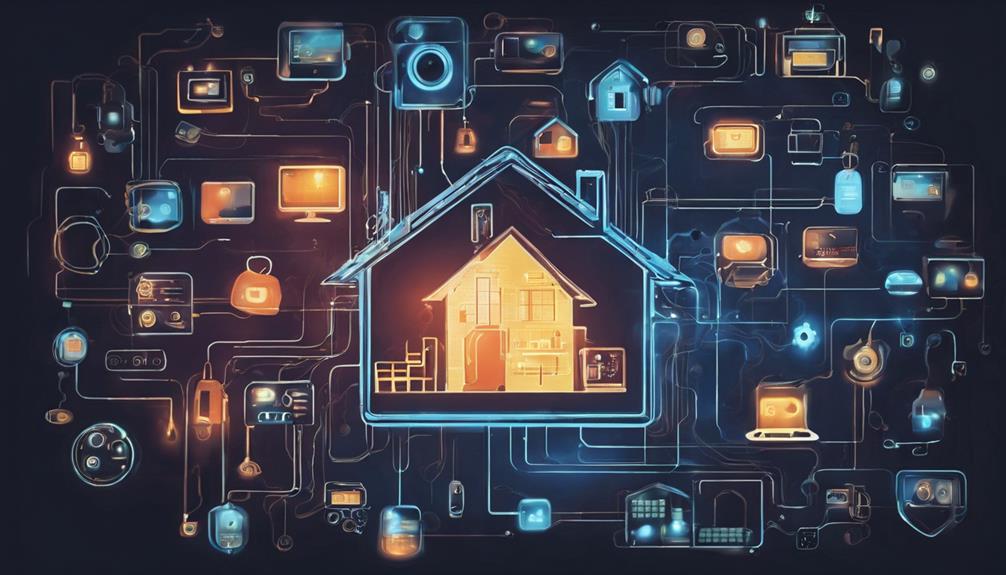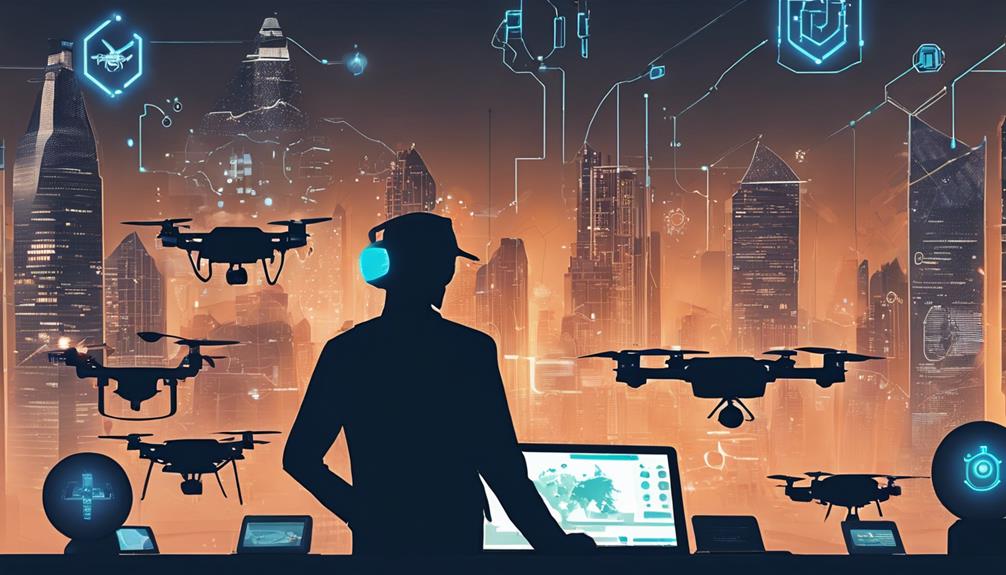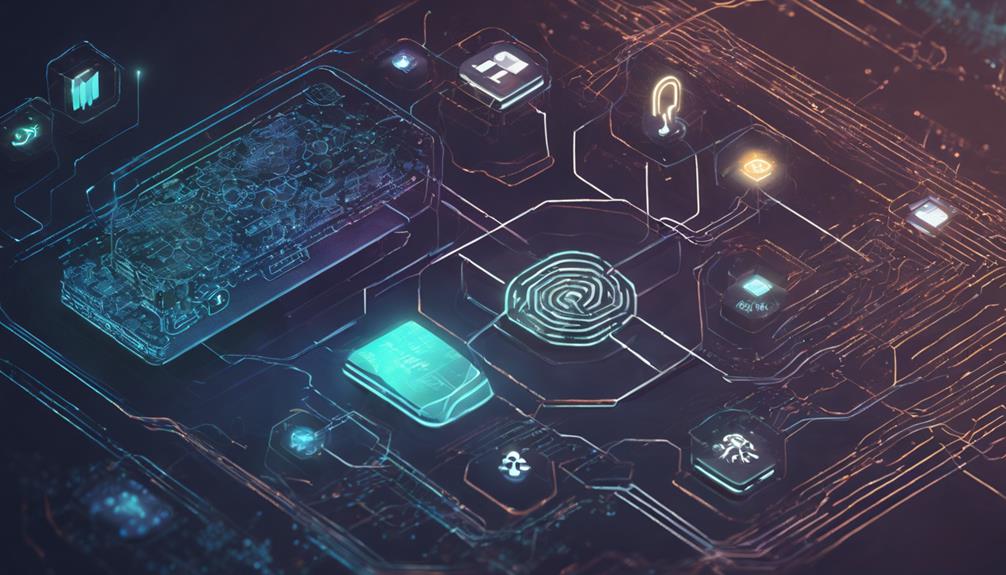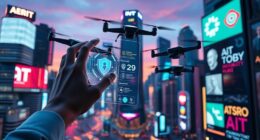Bringing more AI technology into the home poses cybersecurity risks, including data breaches, code vulnerabilities, and unauthorized access through interconnected devices. AI devices storing personal information require robust security measures like secure passwords and software updates. Vulnerabilities in AI-generated code can lead to data leaks and breaches, emphasizing the need for secure coding practices. Users must manage AI devices carefully to prevent privacy breaches and comply with data protection laws. Implementing encryption, user awareness, and secure authentication can mitigate these risks. Safeguarding privacy and security in the home is paramount to protect personal data.
Key Takeaways
- Data breaches due to stored personal information.
- Vulnerabilities in AI-generated code leading to breaches.
- New attack vectors through interconnected devices.
- Privacy breaches from AI devices gathering sensitive data.
- Compliance challenges with data protection laws like GDPR and CCPA.
Data Breaches and Misuse of Information
The integration of AI technology in residential settings poses significant cybersecurity risks, particularly concerning data breaches and the misuse of personal information. With the increasing connectivity of AI devices in homes, the potential vulnerabilities for hackers to exploit and gain access to sensitive data have also grown.
Home AI systems often collect and store personal information, making them attractive targets for cybercriminals seeking to exploit this data for malicious purposes. Poorly secured AI technology can lead to unauthorized access to smart home devices, compromising user privacy and exposing individuals to various risks associated with data breaches.
To mitigate these risks, it is essential for individuals to implement robust cybersecurity measures when utilizing AI technology in their homes. This includes setting up secure passwords, regularly updating software to patch vulnerabilities, encrypting sensitive data, and being cautious about the permissions granted to AI devices.
Vulnerabilities in Ai-Generated Code
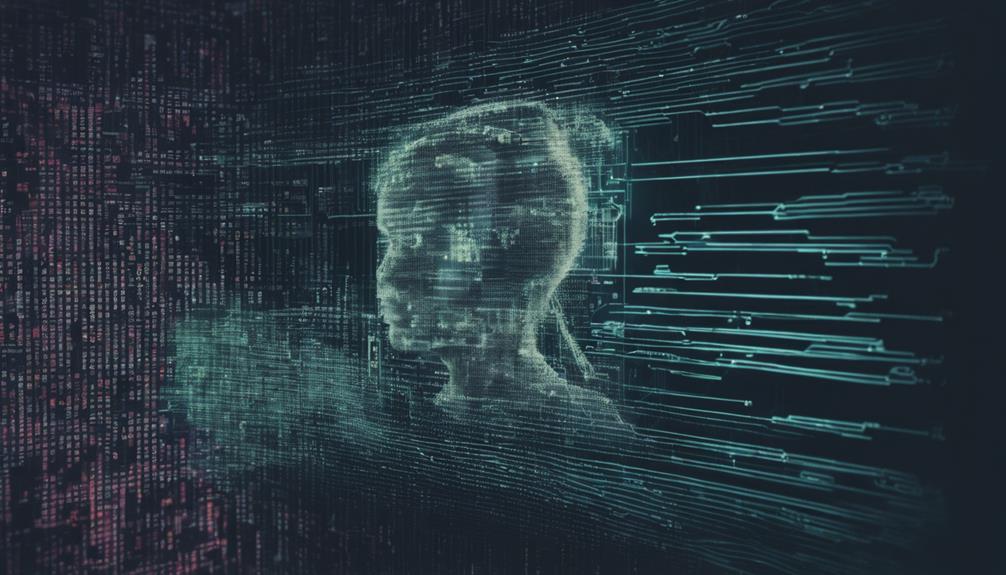
Vulnerabilities inherent in AI-generated code pose a significant threat to the security of smart home devices and networks. These weaknesses can pave the way for security breaches and data leaks, allowing malicious actors to exploit AI algorithms to gain unauthorized access to sensitive information within smart home environments.
Code vulnerabilities in AI-powered devices open the door for privacy violations and the compromise of personal data, putting homeowners at risk of various cyber threats.
To mitigate these risks, it is imperative for developers and manufacturers to prioritize the implementation of robust security measures in AI-generated code. By conducting thorough security assessments, regularly updating software, and implementing encryption protocols, the chances of unauthorized access and manipulation of smart home devices can be greatly reduced.
Strengthening the security of AI technology in homes is essential to safeguard against potential threats and ensure the protection of personal information in an increasingly interconnected world.
New Attack Vectors Through Interconnected Devices

How can the increasing interconnectedness of devices in smart homes expose new avenues for cybercriminal attacks?
The integration of AI technology into home devices brings about a myriad of cybersecurity risks, particularly through the interconnection of these devices.
As AI-enabled devices communicate with each other within a smart home ecosystem, they create potential vulnerabilities that cybercriminals can exploit. These vulnerabilities could result in unauthorized access to sensitive information or even data breaches, posing significant risks to the security and privacy of homeowners.
Additionally, the lack of standardized security protocols for AI-enabled devices further exacerbates these cybersecurity concerns, making it easier for cyber attacks to occur.
It is essential for manufacturers and users alike to prioritize implementing robust security measures to safeguard interconnected AI devices in smart homes and mitigate the risks of cyber threats.
Privacy Breaches and Unauthorized Access

The privacy risks associated with AI technology in homes are significant. They encompass concerns about data privacy breaches, unauthorized smart device access, and personal information exposure.
Data privacy is an essential consideration due to the potential for sensitive personal data to be collected and shared without consent.
Unauthorized access to smart devices can lead to the exposure of personal information. This highlights the importance of robust security measures to safeguard against such risks.
Data Privacy Concerns
Enhancing adoption of AI technology in households heightens the risk of privacy breaches and unauthorized access to personal data due to the extensive data collection and processing involved. AI devices have the capability to gather and analyze sensitive data, making them vulnerable to privacy violations and unauthorized access.
The complexity of AI systems complicates the task of guaranteeing secure data storage and protecting personal information from potential breaches. Users must prioritize managing their AI devices diligently to minimize the risks associated with privacy breaches and unauthorized data access at home.
To safeguard data privacy when using AI devices, individuals should regularly review their device permissions, enable encryption where possible, and update software and security settings. Implementing strong passwords and enabling multi-factor authentication can add an extra layer of protection against unauthorized access.
Additionally, being cautious about the information shared with AI devices and monitoring their data usage can help prevent privacy breaches and uphold personal data security within the home environment.
Unauthorized Smart Device Access
Concerns regarding unauthorized access to smart devices in the home have escalated due to the potential privacy breaches and security risks associated with AI technology integration. Smart devices connected to AI technology may be vulnerable to cyber attacks, leading to unauthorized users gaining access and compromising personal information.
This unauthorized access can result in privacy breaches, data theft, and surveillance, posing significant risks to individuals and households.
To mitigate these risks, implementing robust security measures is vital. Users should secure their smart devices with strong, unique passwords, regularly update firmware and software, and guarantee secure Wi-Fi networks.
By taking proactive steps to enhance the security of smart devices, individuals can reduce the likelihood of unauthorized access and protect their privacy.
As AI technology continues to advance and become more prevalent in homes, staying vigilant and prioritizing cybersecurity measures are essential to safeguard personal information and maintain a secure environment for smart device usage.
Personal Information Exposure
An escalation in AI technology integration within households heightens the vulnerability to privacy breaches and unauthorized access, necessitating an essential approach to safeguard personal information.
When contemplating the risks of personal information exposure in the context of home technology, it's vital to comprehend the potential consequences and take appropriate measures to mitigate these risks.
Here are four key points to ponder:
- AI devices can store sensitive data: Many AI devices in homes collect and retain personal information, making them attractive targets for cybercriminals seeking to exploit this data.
- Risk of unauthorized access: Unauthorized individuals gaining access to AI devices can lead to the exposure of personal information, posing a significant cybersecurity risk for households.
- Privacy breaches: Without robust security measures, AI devices are susceptible to privacy breaches, potentially resulting in the compromise of sensitive data.
- Protecting personal information: Users must remain vigilant about cybersecurity risks associated with AI technology to safeguard their personal information effectively.
Compliance Challenges With Data Protection Laws

Strict adherence to data protection laws such as GDPR and CCPA is imperative when incorporating AI technology into the home, as non-compliance can lead to severe consequences for both individuals and companies. Privacy regulations mandate that personal data collected by AI devices in the home must be handled with care to safeguard user privacy.
To comply with these laws, it is essential for users to understand how their personal data is being utilized by these devices. Failing to adhere to data protection laws can result in hefty fines and legal ramifications, underscoring the importance of implementing robust security measures and obtaining user consent when using AI technology at home.
Safeguarding Privacy and Security

Protecting your privacy and security in a world of AI technology is paramount.
Data privacy concerns, security vulnerabilities in AI systems, and protection against hacking are critical points to address.
Data Privacy Concerns
Protecting data privacy in the domain of AI technology within homes necessitates vigilant measures to prevent unauthorized access and protect sensitive information. When considering data privacy concerns in the context of AI technology at home, it is essential to address the following:
- Transparent Data Practices:
Ensuring that users have clear visibility and control over the information collected by AI devices is vital in mitigating privacy risks.
- Strong Encryption:
Implementing robust encryption measures is necessary to safeguard personal data from potential cyber threats that may target AI devices in homes.
- User Awareness:
Educating users about the security risks associated with AI technology can help prevent data breaches and unauthorized access to personal information.
- Secure Authentication:
Utilizing secure authentication methods adds an additional layer of protection against privacy breaches and enhances the overall security posture of AI devices in the home.
Security Vulnerabilities in AI
Security vulnerabilities in AI technology present significant challenges in safeguarding privacy and security within home environments. AI devices, while offering convenience, can also pose risks such as data leaks, unauthorized access, and potential exposure of sensitive information to malicious actors. Cyber attacks targeting interconnected home devices are on the rise, making it essential to address security concerns promptly.
To understand the gravity of security vulnerabilities in AI, let's explore some key risks:
| Risk | Description |
|---|---|
| Data Leaks | Potential for AI devices to inadvertently share sensitive information. |
| Privacy Breaches | Unauthorized access leading to the compromise of personal data. |
| Malicious Actors | Threat of hackers exploiting security flaws in AI-powered home devices. |
Protection Against Hacking
How can homeowners effectively fortify their AI devices against hacking threats to guarantee the utmost privacy and security within their living spaces? To protect against unauthorized access and safeguard sensitive information, consider the following cybersecurity best practices:
- Implement strong encryption: Encrypting data transmitted between AI devices and servers can help prevent hackers from intercepting and decoding sensitive information.
- Maintain regular software updates: Keep your AI devices up to date with the latest security patches and software releases to patch known vulnerabilities that hackers could exploit.
- Configure secure network settings: Set up secure network configurations, such as using firewalls and strong passwords, to prevent unauthorized access to your AI devices.
- Monitor device behavior: Regularly review the activity logs of your AI devices to detect any unusual behavior that could indicate a potential hacking attempt.
Frequently Asked Questions
What Are the Cyber Security Risks of Ai?
AI technology introduces cybersecurity risks such as unauthorized access, data breaches, and manipulation. Malicious actors can exploit vulnerabilities in AI systems to spy on users, gather sensitive information, and launch attacks on connected devices, escalating threats as AI integration expands.
How Does AI Increase Cyber Attacks?
AI technology increases cyber attacks by enabling automated and sophisticated threats that can bypass traditional security measures. Malicious actors leverage AI to create convincing phishing emails and malware, exploiting vulnerabilities in AI systems used in homes and compromising personal data and privacy.
What Is the Main Challenge of Using AI in Cybersecurity?
The main challenge of using AI in cybersecurity lies in ensuring the integrity and security of AI systems against cyber threats. Protecting AI systems from exploitation, manipulation, and unauthorized access is essential for robust cybersecurity defense.
What Is an Example of Cyber Security in Ai?
An example of cybersecurity in AI is the use of machine learning algorithms to detect and prevent malware infections on home devices. AI-powered security systems can analyze network traffic in real-time to identify and block potential cyber threats within home networks.
Conclusion
To summarize, the integration of AI technology into our homes poses a myriad of cybersecurity risks that must be carefully considered and addressed.
By understanding the potential vulnerabilities and taking proactive measures to safeguard our privacy and security, we can enjoy the benefits of AI technology without falling victim to its pitfalls.
So, while the convenience and innovation of AI may be enticing, it is important to remember that with great power comes great responsibility.
